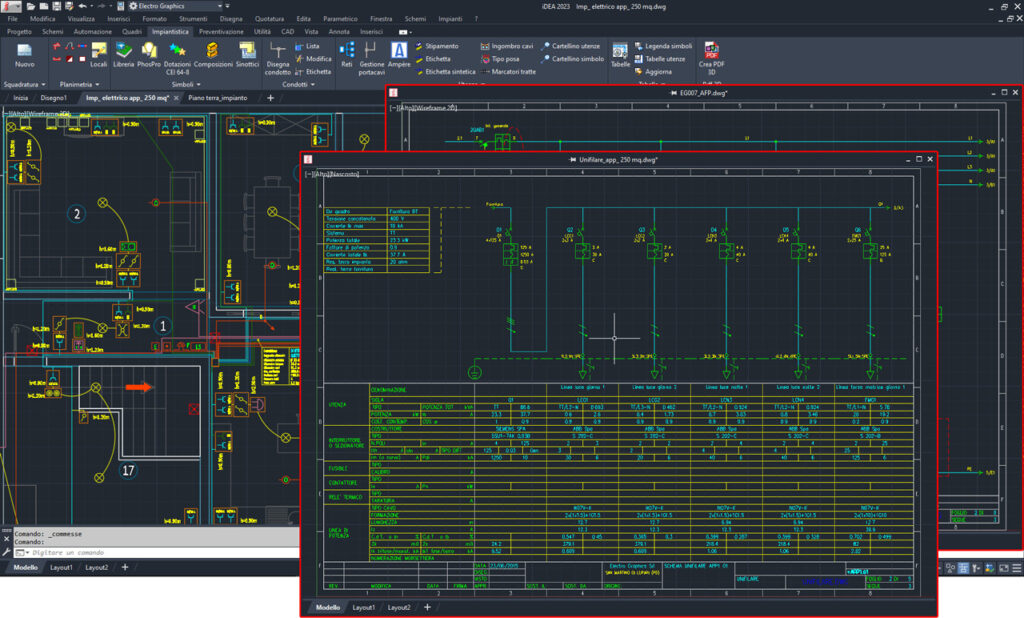Electrical engineering has always been a complex discipline, demanding precision and accuracy in design. Before the advent of specialized software, engineers relied on manual drafting techniques to create circuit diagrams, wiring layouts, and control systems. The rise of electrical Computer-Aided Design (CAD) tools revolutionized this process, automating tedious tasks, reducing errors, and increasing efficiency. This article delves into the evolution of electrical CAD, highlighting how specialized tools transformed the industry, the role of pioneers like AutoCAD Electrical, and the future of electrical design software.
Before Electrical CAD: The Age of Manual Drafting
In the mid-20th century, electrical engineers designed circuits and control systems by hand, using drafting tables, rulers, and stencils. While these techniques laid the foundation for modern electrical systems, they were slow, prone to human error, and difficult to revise. Changes in project specifications often required redrawing entire sections, leading to delays in large projects.
The introduction of general-purpose CAD software in the 1980s marked a turning point. Tools like AutoCAD allowed engineers to digitize their designs, making it easier to modify and share blueprints. However, these early CAD tools were primarily developed for architectural and mechanical design, offering little support for electrical workflows.
The Rise of Specialized Electrical CAD Software
Recognizing the limitations of general-purpose CAD tools, software developers began creating specialized solutions for electrical design in the 1990s. These tools were tailored to address the unique needs of electrical engineers, such as symbol management, automatic wire numbering, and real-time error detection.
One of the most notable early entrants was AutoCAD Electrical, a product of Autodesk. Unlike traditional AutoCAD, it featured libraries of pre-defined electrical symbols, automated reporting tools, and built-in compliance with international standards (e.g., IEC and ANSI). These innovations drastically reduced the time needed to create complex electrical schematics and minimized errors, setting a new standard for the industry.
Around the same time, other companies introduced competing products, including EPLAN, Zuken E3.series, and See Electrical, each offering unique capabilities. These tools were widely adopted across industries, from manufacturing and automotive to aerospace and power distribution.
How Specialized Software Transformed Electrical Design
1. Increased Productivity
Electrical CAD software automated repetitive tasks, such as wire numbering, component tagging, and cross-referencing. Engineers could now complete designs in a fraction of the time it took with manual drafting or general-purpose CAD tools.
2. Improved Accuracy
With real-time error checking and built-in compliance features, electrical CAD tools significantly reduced the risk of design errors. This not only improved the quality of designs but also reduced costly rework during the construction phase.
3. Standardization
By incorporating international standards, electrical CAD software ensured that designs met industry regulations. This was especially important for projects involving international teams, where consistency and compliance were critical.
4. Collaboration and Integration
Many specialized CAD tools integrated with other engineering software, such as mechanical CAD (MCAD) and Building Information Modeling (BIM) tools. This facilitated better collaboration between disciplines and enabled more holistic project planning.
The Current Landscape: Leading Electrical CAD Tools
Today, several specialized electrical CAD tools dominate the market. Each offers unique features tailored to specific industries:
• AutoCAD Electrical: Known for its extensive symbol libraries and integration with other Autodesk products, it remains a popular choice for control system design.
• EPLAN Electric P8: Widely used in industrial automation and manufacturing, EPLAN excels at handling complex projects with high levels of automation.
• SolidWorks Electrical: Offering seamless integration with mechanical design in SolidWorks, it’s ideal for mechatronic projects involving both mechanical and electrical components.
• Zuken E3.series: This tool is favored in industries like automotive and aerospace due to its advanced cable and harness design capabilities.
• See Electrical: Known for its user-friendly interface, See Electrical is often chosen by smaller teams and organizations.
The Future of Electrical Design Software
The future of electrical CAD is likely to be shaped by several technological trends:
1. Cloud-Based Collaboration
As teams become more distributed, cloud-based solutions are becoming essential. These platforms enable real-time collaboration and version control, ensuring that everyone works on the latest design iteration.
2. Artificial Intelligence and Automation
AI-driven design tools are already being developed, promising to further automate tasks like component placement and routing. These tools could also offer intelligent suggestions based on design rules and past projects.
3. Integration with IoT and Smart Systems
With the rise of the Internet of Things (IoT) and smart systems, electrical design software may evolve to support the design and simulation of connected devices and networks.
4. Enhanced Simulation Capabilities
Future tools could incorporate advanced simulation features, allowing engineers to test and validate designs in a virtual environment before physical implementation.
Conclusion
From manual drafting to intelligent design automation, the evolution of electrical CAD software has dramatically transformed electrical engineering. Tools like AutoCAD Electrical, EPLAN, and SolidWorks Electrical have empowered engineers to work faster, more accurately, and collaboratively, setting new standards for the industry.
As technology continues to evolve, so too will electrical design software, offering even more sophisticated tools and capabilities. For electrical engineers, staying updated with the latest advancements is crucial to maintaining a competitive edge in an ever-changing industry.
Whether designing complex industrial systems or simple residential circuits, modern electrical CAD tools provide the precision and efficiency needed to turn concepts into reality. The journey of electrical CAD is far from over, with new innovations on the horizon promising to make the future of electrical engineering even more exciting.




